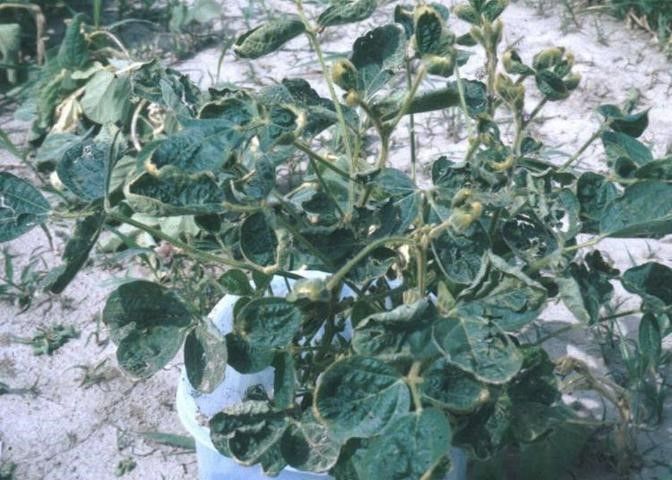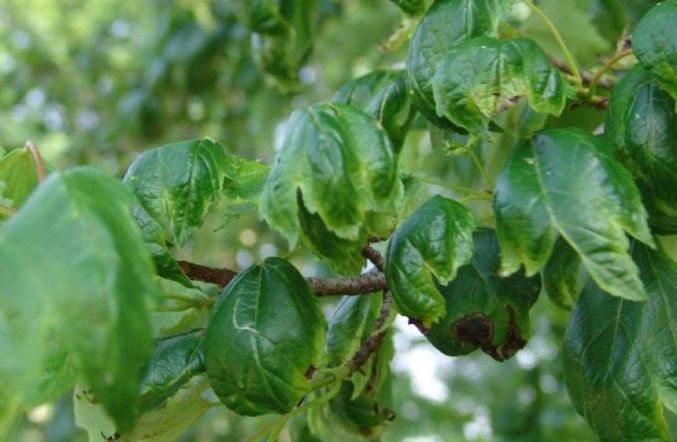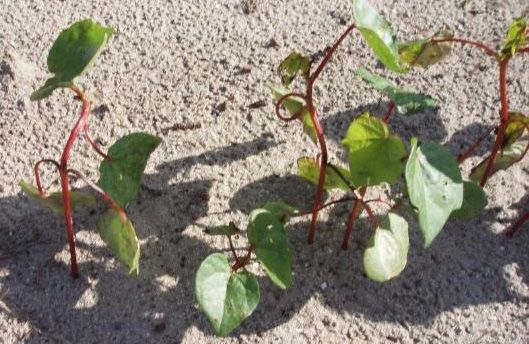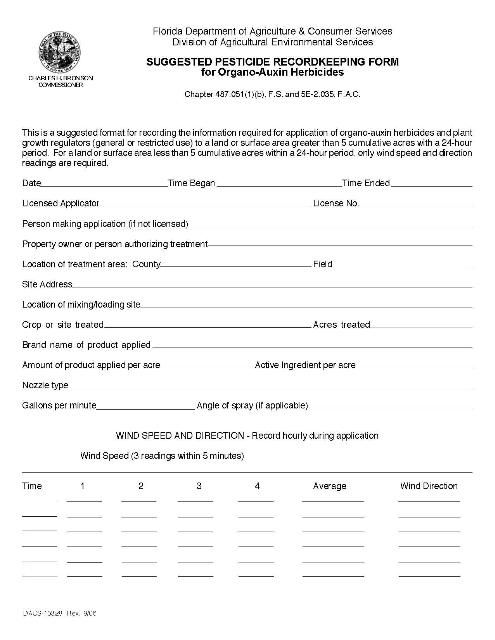Florida's Organo-Auxin Herbicide Rule—2021
Organo-auxin (phenoxy) herbicides were first developed during the 1940s and have been used extensively in the United States since then. This group of chemicals has found a place in weed control schemes for peanut, corn, small grains, sugarcane, turf, pasture and forage crops, and many other areas. On a worldwide basis more phenoxy herbicides are used than any other class of herbicides presently manufactured. The phenoxy herbicide group's unique ability to remove broadleaf weeds from grass crops has been exploited for successful weed control in many areas.
Organo-auxin herbicides have been formulated in a number of ways with each formulation possessing certain characteristics. Amine and ester formulations have been the most popular although other forms of phenoxys do exist. As a general rule, ester formulations are more active than amines. This difference in control/activity has made ester formulations very popular due to the fact that about one half the rate of the amine formulation could be used and achieve the same weed control level. Therefore, growers could buy less total herbicide in the ester form to do the same job as a larger amount of a phenoxy in the amine form.
Although ester formulations are more active herbicidally than amine formulations, they do have serious drawbacks associated with their use. Specifically, ester formulations are typically very volatile and possess the ability to move away from the target site up to several days after the initial herbicide application has been made. Volatilization problems have led to the complete destruction of nearby sensitive crops if weather conditions were favorable for volatilization to occur. Sub-lethal doses of organo-auxin herbicides cause very visual effects, indicative of hormonal action (Figures 1–4). Due to volatilization problems, many states have totally banned the use of high-volatile ester formulations and discouraged use of lower volatile esters in sensitive areas. Florida is one such state with these regulations. Due largely to phenoxy herbicide applications in south Florida on sugarcane and drift or volatilization to nearby tomato crops and their subsequent destruction, the Florida Department of Agriculture and Consumer Services (FDACS) enacted the Organo-Auxin Herbicide Rule (Table 1). This rule applies to the application of organo-auxin herbicides anywhere within the state. It is the intent of this publication to clarify and disseminate the Florida Organo-Auxin Herbicide Rule to interested growers and applicators.




A suggested recordkeeping form developed by FDACS is available for applicators of organo-auxin herbicides to record their data. Although this specific form is not required, it does contain spaces for providing the required data to be recorded (Figure 5).

The Florida Organo-Auxin Herbicide rule 5E-2.033 appears in the Florida Pesticide Law and Rules. All inquiries should be addressed to:
Bureau of Inspection and Incident Response
Division of Agricultural Environmental Services
Florida Department of Agriculture and Consumer Services
3125 Conner Boulevard, Ste. N
Tallahassee, FL 32399-1650
Phone: 850-617-7996
Fax: 850-617-7981

Table 1. Florida organo-auxin herbicide rule No. 5E-2.033 organo-auxin herbicides.


